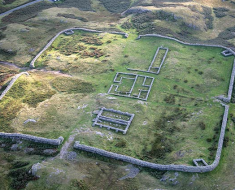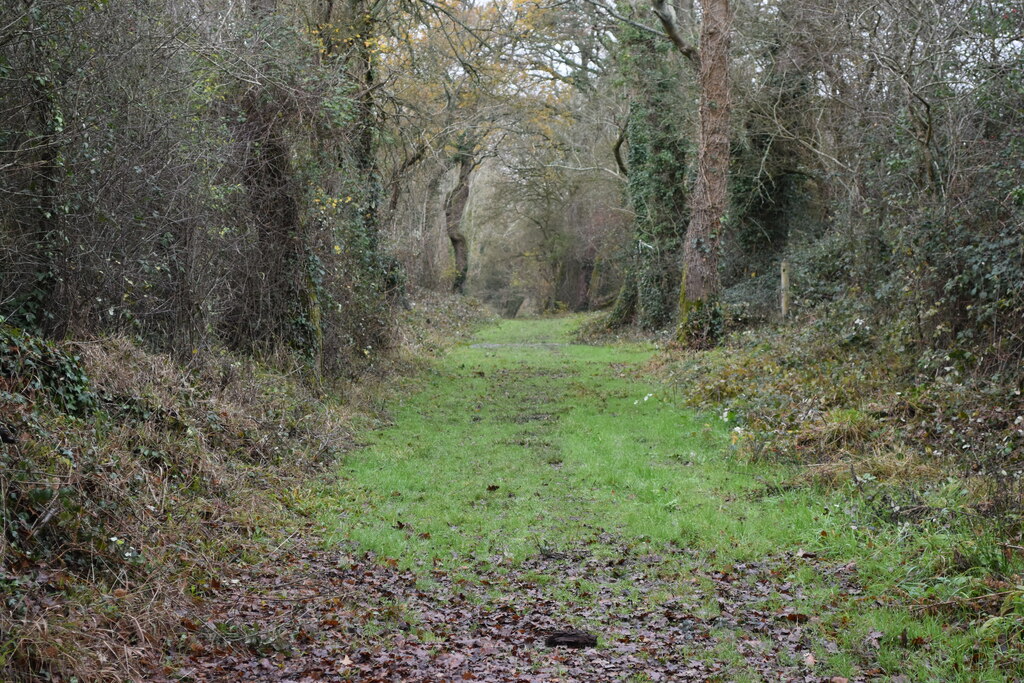Place Names: When Vikings landed on Britain’s shores at the end of the eighth century they forever influenced the future of the British Isles.
These fearsome Scandinavian warriors brought with them new customs, beliefs, laws, and language that integrated with and changed the culture of Britain. Relics of Britain’s age of Vikings can still be seen around the UK today.
Archeologists and historians have uncovered incredible artefacts, burials and relics left behind by the Vikings. However, perhaps one of the easiest to spot reminders of Britain’s Viking Age are Viking place names attached to British towns. The Danes derived place names to describe the physical landmarks and features of an area.
Read More: The Mass Viking Burial Pit on the South Dorset Ridgeway
They named places after the people that lived there, and adapted Anglo-Saxon place names to incorporate Scandinavian influences. Perhaps unsurprisingly, areas that were under strong control of the Danes, such as places in the area that was once Danelaw, have a larger number of Viking place names than those that had little influence from these Scandinavian warriors.
The presence of the Vikings meant that elements of Viking customs and culture were integrated into the British way of life and became a building block of the Britain we know today.
Contents
- Thwaites and Kelds
- Thorpes, Tofts, Bys, and Kirks
- The Conundrum of Ness
- Corruptions and Adaptations
- Nicknames that Became Place Names
Thwaites and Kelds
The names of many places across the countryside were derived from the physical attributes of the landscape of an area or significant features, such as castles or monasteries. Towns such as Heathfield, Newcastle, and Kidderminster are all good examples of this. Lesser known, but equally prominent, were suffixes added to place names by the Vikings.
Read More: Anglo-Saxon Perambulations, What are They?
Many of these medieval place names have endured to today. The word-ending thwaite, is one such example; towns including Slaithwaite in West Yorkshire, still bear this historic suffix.

Deriving from Viking times, thwaite, a corruption of the world thveit, was used to describe a woodland clearing. Bearing the thwaite word-ending, Bassenthwaite, in Cumberland, is another town name that likely has Viking origins.
Keld, or Kelda, was another nature based Viking word that found a place in the town and village names of Britain. Keld, simply meaning spring, was applied to place names by the Vikings, unsurprisingly most commonly for places located by a spring.
Read More: Winchester: The Ancient City that Built England
The village of Dunkeld can still be found in Scotland, and the town of Threlkeld is in Cumbria. Again, venturing to Yorkshire, there is even a village simply called Keld, that is thought to have had its name originate with the Vikings.
Thorpes, Tofts, Bys, and Kirks
It wasn’t just the natural world that the Danes took naming inspiration from when it came to creating place names, prominent man made structures and settlements also found their way into the monikers of towns and villages under Viking rule.
Thorpe is one particularly prominent example of a Norse place name, with examples including Copmanthorpe in North Yorkshire, and Mablethorpe in Lincolnshire.

The term thorpe had a rather simple meaning, thought to roughly translate to mean secondary settlement, and in many cases was given to settlements that were on the outskirts of more prominent towns or villages. However, it is important to note that not every town ending in thorpe in the UK had Viking origins.
It is thought that in some cases thorpe is a corruption of the Old English word throp, coincidentally also meaning settlement, this is often particularly the case in the Midlands region.
Place Names
Read More: What Are The Anglo-Saxon Charters?
Toft, found in British place names such as Lowestoft in Suffolk, Huttoft in Lincolnshire, and Langtoft, also in Lincolnshire, have origins with the Danes. Toft, or topt, was thought to have denoted the site of a house and most historians agree that place names with this origin likely date to the Viking Age.
The suffix by, also still widely used across Britain, comes from the settlements of the Danes. By, was a term used to describe a farmstead, settlement or village, and gave rise to many place names still recognisable today.
Examples include the towns of Selby and Whitby, and in just Yorkshire there are over two hundred locations that incorporate the by word-ending.

While churches may be more commonly associated with the Anglo-Saxons rather than the Vikings, the term Kirk actually comes from the Dane work Kirkja, meaning church.
Read More: Uncovering the Fascinating Origins of Rural Place Names
The term is still sometimes used to describe a church in modern times, and there are many examples from both the Viking age and afterwards, of places in the British Isles incorporating the word Kirk.
The Conundrum of Ness
The addition of ness to place names offers an interesting, and somewhat confusing, piece of the puzzle to the origins and history of an area, and this because ness has Norse, Gaelic, and Old English origins. As such, it can take some historical decoding to uncover exactly how the origins of place names that include ness developed.

In the case of Inverness in northern Scotland, the place name origins are believed to be Gaelic, deriving from Gaelic ness that describes a prominent headland. In the instance of Inverness specifically however, the name is thought to mean the mouth of the river Ness.
Read More: The Story of the Anglo-Saxon Kingdoms
Interestingly, the Scots weren’t the only group to give the meaning of a headland or promontory point to the term ness, with the term holding a similar meaning in both Old Norse and Old English. The fact that this term was used by all of these groups has made it especially prominent across the British Isles.
While Inverness may have Gaelic origins, Sheerness in Kent comes from Old English, and Skegness in Lincolnshire is from Old Norse.
Corruptions and Adaptations
In some cases, Viking invaders didn’t so much name places with new names, but adapted or corrupted the names places already had. This may have been to make them easier to say from a Norse speaking background, or just as simple mispronunciations that stuck. Shelton, for example, became Skelton under Viking influence.
Read More: Beating The Bounds a 2000-Year-Old Custom
While adaptations and corruptions did occur, in some instances Danes gave places new names that had the same meaning in their native tongue as it did to the Anglo-Saxons. One of the best examples of this is the city of York.

For many years York formed the capital of Viking lands in England, and was an important stronghold for the Vikings. However, when Vikings first arrived in York, the settlement was known as Eoferwic, a Saxon name that is believed to have translated to mean wild boar settlement.
Read More: The Forgotten Roman Roads
Finding this name a bit of a mouthful, these Norse invaders renamed the city to Jorvik, a term native to the Vikings that is thought to have meant wild boar creek. Eventually the name of the city was further corrupted to become the moniker York, that it is known by today.
Nicknames that Became Placenames
It wasn’t uncommon for the Danes to name a place after a specific person, while in some cases people’s actual names were used, the Vikings were also fond of nicknames.
At times, the nickname of a person that lived in or owned a certain area wound up becoming the actual name of the place. Kexby, in Yorkshire, refers to a farm owned by an individual named Keik.

While who exactly Keik was has been lost to history, it is believed that Keik was not their real name, but rather a nickname that translates to mean bent backwards.
Read more: Crop Marks, Natures’ History Trail
In fact, Vikings were so fond of nicknames that many of their leaders had these attached to their names. Even one of the leaders of the Great Heathen Army that invaded England in the ninth century is thought to have possibly been known by the nickname ‘white shirt.’
The Influence of Viking Lands
Seeming as the Vikings held control of the area known as Danelaw, it may come as no surprise that many of the placenames with Old Norse and Dane origins are centred around this area.
A wide variety of place names with Scandinavian origins are found in counties such as Lincolnshire and Yorkshire, both areas that were historically part of Danelaw.

This includes towns with Scandinavian monikers such as Grimsby, translating to mean farm or settlement of a man named Grímur, an old Scandinavian name.
The Isle of Man, also an area that became a Viking stronghold, has Scandinavian place names, this is particularly evidenced by Snaefell, the name of the highest point on the Isle of Man. Snaefell, composed of the terms snæ and fell, quite simply translates to snow mountain.
The History of Norse Place Names
The arrival of the Vikings changed the very course of the history of Britain. Viking customs, beliefs and traditions influenced the culture of Britain and the Viking Age left a lasting impression on the story of the UK. One of the most obvious leftovers from the Vikings can be found in the place names of Britain.
Read More: Horses in Early Anglo-Saxon England
From suffixes denoting natural landscapes, to monikers inspired by Viking nicknames, there are towns, villages, and cities across the United Kingdom that still reference their Viking pasts.
While in some cases, these links to Scandinavian naming conventions can be confusing to decode, they do offer a vital tool in uncovering the influence and progression of the Danes across the historic landscape of England.
These place names help to demonstrate the interaction between the invading Norsemen and the Anglo-Saxons, and have become relics of the past that have endured into the present. From Copmanthorpe to Kexby, Grimsby to Snaefell, when exploring the place names of Britain, there is a lot of history waiting to be found.






